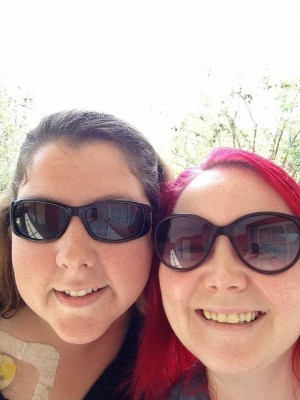Mast cells in vascular disease: Part 2
Chymase is a mediator produced and released by mast cells. It is an enzyme that converts angiotensin I to angiotensin II, which is important in regulating blood pressure. Chymase can also activate TGF-b1, IL-1b and degrade some of the proteins that hold cells together in tissues.
Release of chymase by local mast cells is a large factor in plaque instability. This is thought to be by raising amount of angiotensin II and degrading a structure that stabilizes the plaque. Chymase also causes apoptosis, or cell death, of smooth muscle cells, which lie underneath the plaque. It was recently discovered that activation of the toll like receptor 4 (TLR4) on the surface of the mast cell causes the mast cell to release IL-6. IL-6 then binds to the mast cell and causes it to make and release chymase.
Chymase and tryptase also interfere with cholesterol transport. In plaques, macrophages eat cholesterol and become foam cells. When the foam cells try to release the cholesterol, chymase and tryptase can prevent this, which stabilizes the plaque and makes it larger.
Mast cell activation is also known to affect plaque behavior. In mast cells that could not be activated by IgE, the size of the plaque and cell death around it were reduced. IgE levels are higher in patients who suffer acute coronary syndromes compared with those who don’t, with IgE levels peaking seven days after the event. Patients with hyper-IgE syndrome are much more likely to have coronary artery dilation or aneurysm, although atherosclerosis was not common. A whole body MRI detected impaired vascular integrity in these patients. These patients are expected to be more prone to mast cell activation.
In mastocytosis patients, no increase in atherosclerosis has been reported, though cardiovascular symptoms are not unusual. Some mastocytosis patients demonstrate vascular instability. Two cases of strokes due to cranial artery dissection have been published.
Mice that lack substance P, a neuropeptide that activates mast cells, have better cardiac function than expected. In mouse models, adding substance P to a plaque could cause hemorrhage only if the mouse had mast cells. This indicates that mast cell activation is important in plaque rupture.
References:
Simon Kennedy, Junxi Wu, Roger M. Wadsworth, Catherine E. Lawrence, Pasquale Maffia. Mast cells and vascular diseases. Pharmacology & Therapeutics 138 (2013) 53–65.
Ramalho, L. S., Oliveira, L. F., Cavellani, C. L., Ferraz, M. L., de Oliveira, F. A., Miranda Corrêa, R. R., et al. (2012). Role of mast cell chymase and tryptase in the progression of atherosclerosis: study in 44 autopsied cases. Ann Diagn Pathol 17, 28–31.
Meléndez, G. C., Li, J., Law, B. A., Janicki, J. S., Supowit, S. C., & Levick, S. P. (2011). Substance P induces adverse myocardial remodelling via a mechanism involving cardiac mast cells. Cardiovasc Res 92, 420–429.
Guo, T., Chen,W. Q., Zhang, C., Zhao, Y. X., & Zhang, Y. (2009). Chymase activity is closely related with plaque vulnerability in a hamster model of atherosclerosis. Atherosclerosis 207, 59–67.
